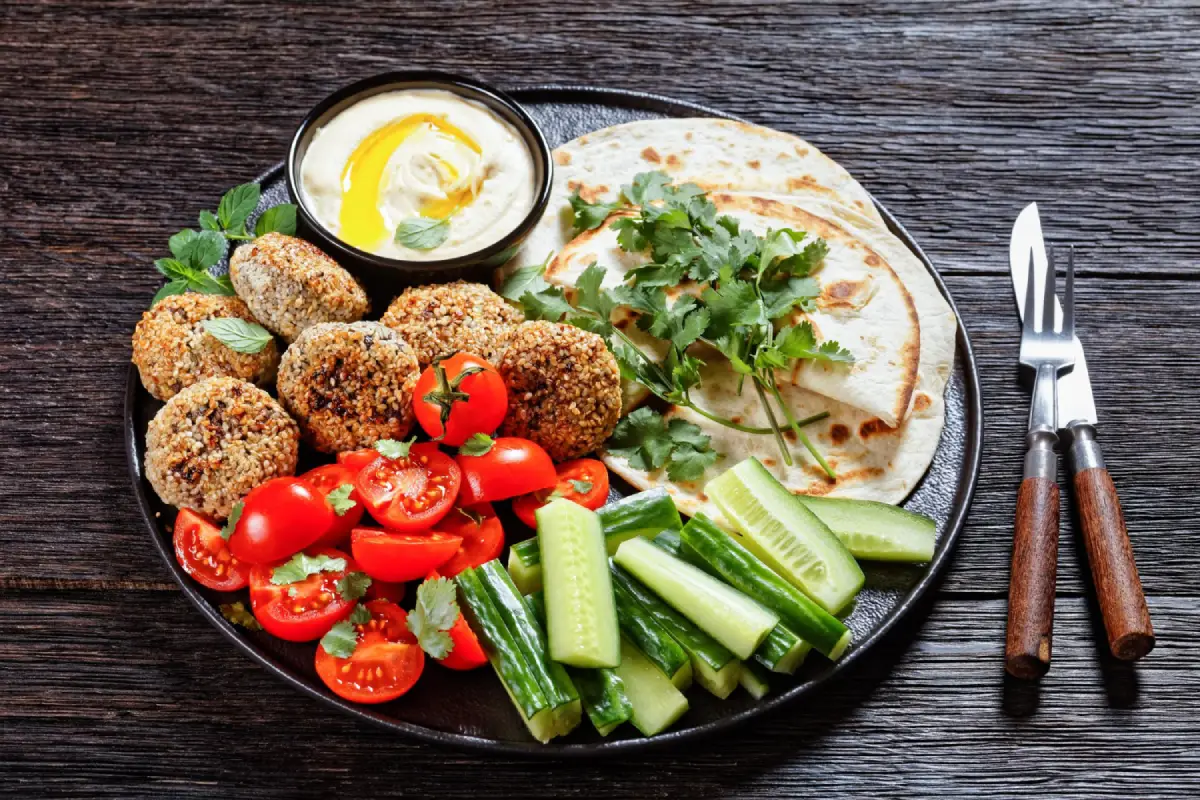Diving into Middle Eastern cuisine, we explore the quintessential trio of falafel, hummus, and pita. Each offers a unique taste that together embodies the region’s culinary richness. In “Mastering Falafel, Hummus, and Pita Recipes,” we’ll uncover the secrets behind these beloved dishes. From the crispy delight of falafel to the smooth, creamy texture of hummus, and the soft embrace of pita, this guide invites you on a flavorful journey. Perfecting these dishes not only treats the palate but connects us to a tradition of hospitality and abundance. Join us as we celebrate the essence of Middle Eastern cooking, bringing timeless flavors from their origins to your kitchen.
The History and Origins of Falafel, Hummus, and Pita
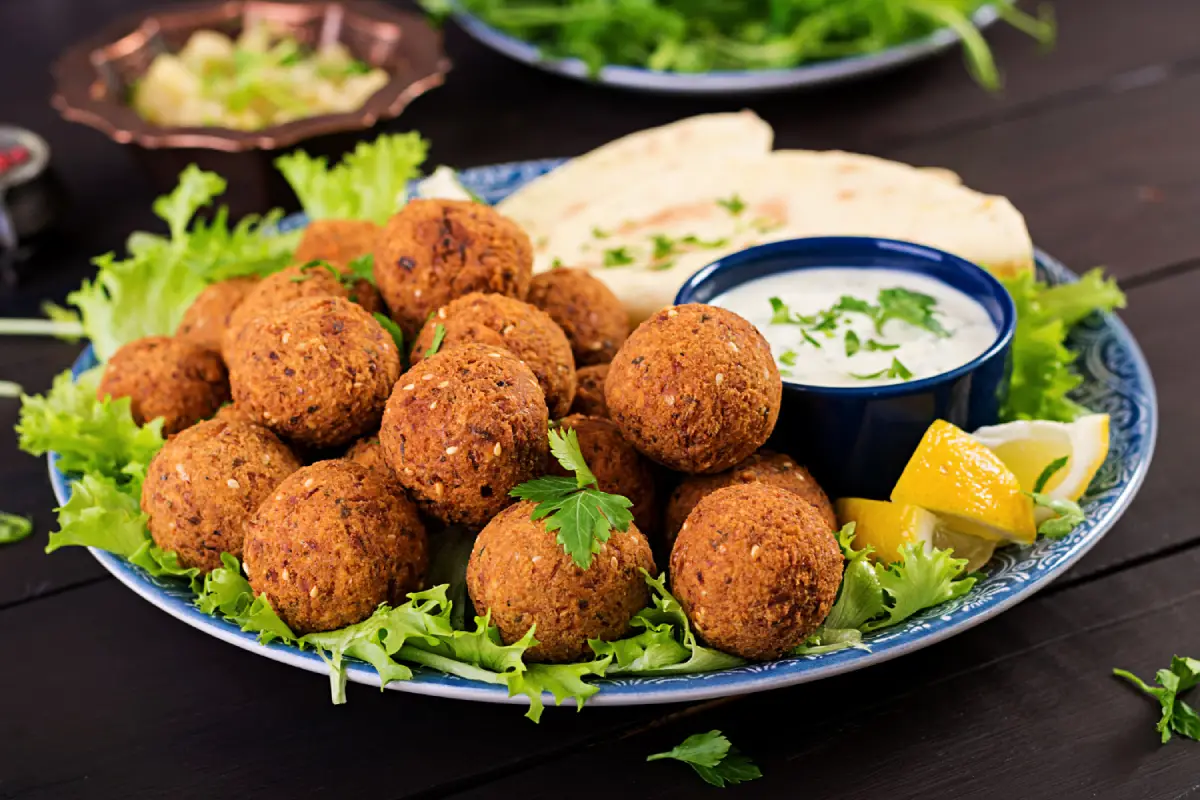
The story of falafel, hummus, and pita is woven into the tapestry of Middle Eastern history, each with roots tracing back centuries. These staples are more than just food; they are cultural icons, deeply embedded in the traditions and daily lives of the people.
Falafel is believed to have originated in Egypt, possibly eaten by Copts as a replacement for meat during Lent. However, it has traveled across the Middle East, with each region adopting its own version. Traditionally made from ground chickpeas or fava beans, mixed with herbs and spices, falafel is fried to perfection, offering a crunchy exterior and a soft, flavorful interior.
Hummus, a creamy blend of chickpeas, tahini, lemon, and garlic, has been a Middle Eastern staple for generations. Its origins are contested among several Middle Eastern countries, each claiming the dish as their own. Regardless of its exact birthplace, hummus remains a symbol of shared heritage across the region.
Pita bread, with its soft, pocket-like structure, is the perfect companion to both falafel and hummus. Its history dates back to prehistoric times in the Middle East, serving as a versatile bread for a variety of meals. Pita not only completes the falafel and hummus experience but also stands as a testament to the ingenuity of ancient baking.
Together, falafel, hummus, and pita encapsulate the essence of Middle Eastern cuisine, characterized by its emphasis on community, simplicity, and flavor. They have transcended their regional origins to become beloved worldwide, adapting to new cultures and tastes while remaining true to their roots.
Falafel, Hummus, and Pita Recipes
Creating authentic Middle Eastern flavors at home is a delightful journey into the world of spices, textures, and aromas. Here, we offer you the ultimate guide to making falafel, hummus, and pita from scratch, bringing the essence of Middle Eastern cuisine right to your kitchen.
Falafel Recipe
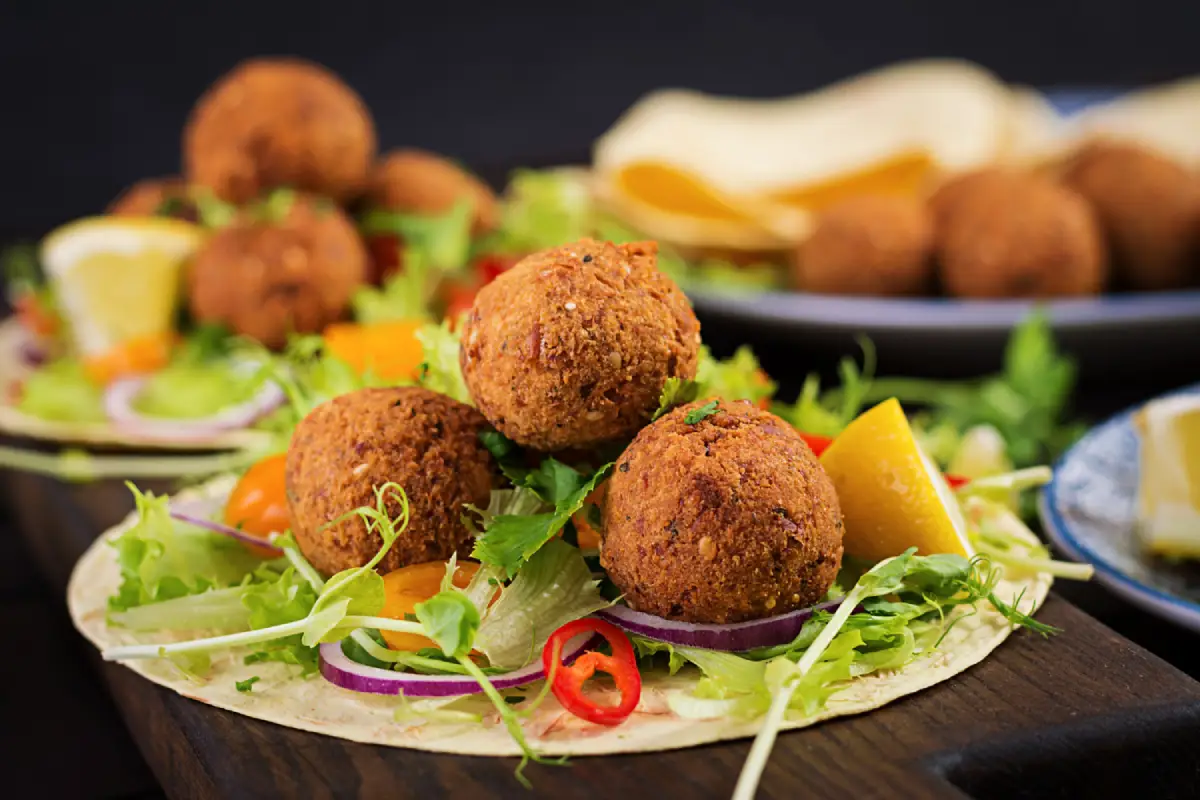
Ingredients:
- 2 cups dried chickpeas, soaked overnight (do not use canned chickpeas)
- 1 small onion, finely chopped
- 2-3 garlic cloves, minced
- 1/4 cup fresh parsley, chopped
- 2 tablespoons fresh cilantro, chopped
- 1 teaspoon ground cumin
- 1 teaspoon ground coriander
- 1/2 teaspoon cayenne pepper
- 1 teaspoon salt
- 1/2 teaspoon black pepper
- 1/2 teaspoon baking soda
- 2 tablespoons flour (optional, for binding)
- Oil, for frying
Instructions:
- Drain and rinse the soaked chickpeas. Combine them with onion, garlic, parsley, cilantro, cumin, coriander, cayenne, salt, and black pepper in a food processor. Pulse until blended but not pureed.
- Transfer to a bowl and stir in baking soda and flour (if using). Let the mixture rest for 30 minutes.
- Form the mixture into small balls or patties.
- Heat oil in a deep pan over medium heat. Fry the falafel in batches until golden, about 5 minutes. Drain on paper towels.
Hummus Recipe
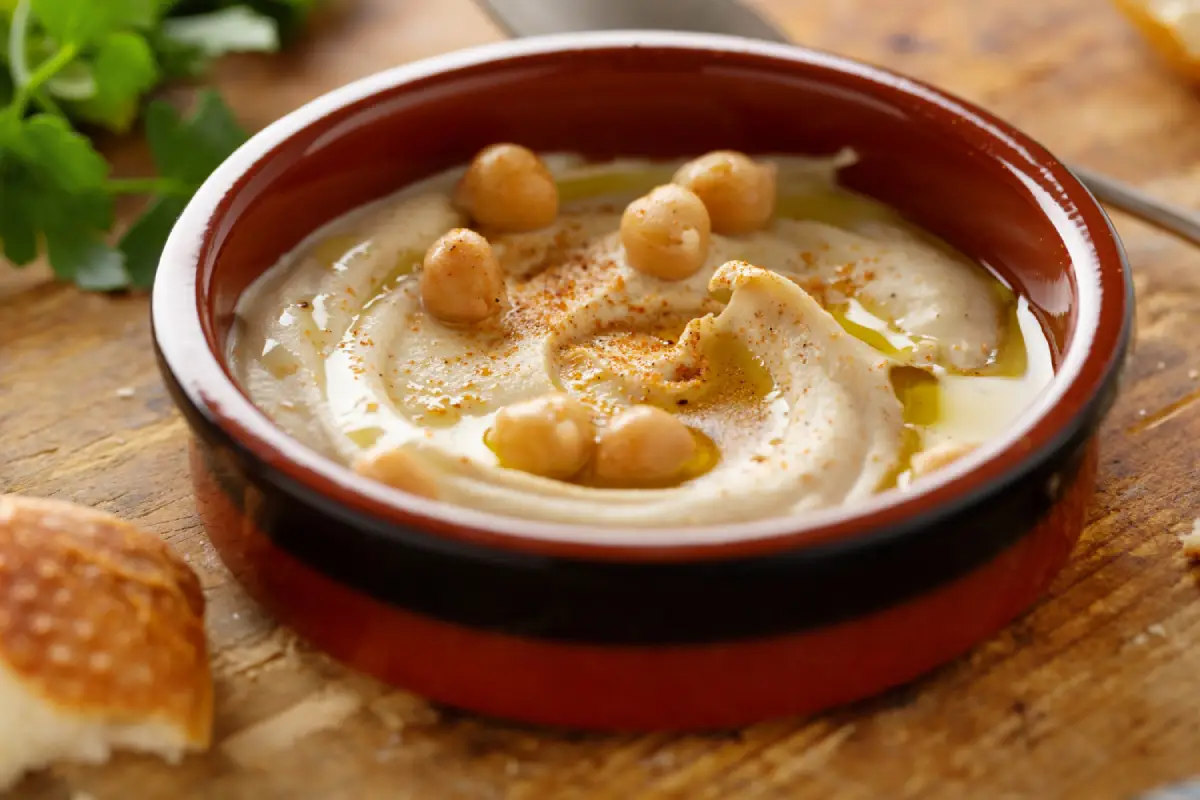
Ingredients:
- 1 can (15 oz) chickpeas, drained and rinsed
- 1/4 cup fresh lemon juice (about 1 large lemon)
- 1/4 cup well-stirred tahini
- 1 small garlic clove, minced
- 2 tablespoons extra virgin olive oil, plus more for serving
- 1/2 teaspoon ground cumin
- Salt to taste
- 2 to 3 tablespoons water
- Dash of paprika, for serving
Instructions:
- In a food processor, combine the tahini and lemon juice and process for 1 minute. Scrape the sides and bottom of the bowl, then process for 30 seconds more.
- Add olive oil, minced garlic, cumin, and a 1/2 teaspoon of salt to the whipped tahini and lemon juice. Process for 30 seconds, scrape the sides and bottom of the bowl, then process another 30 seconds.
- Add half of the chickpeas to the food processor and process for 1 minute. Add remaining chickpeas and process until thick and quite smooth, 1 to 2 minutes more.
- If your hummus is too thick or still has tiny bits of chickpea, add 2 to 3 tablespoons of water until it reaches your desired consistency.
- Serve hummus with a drizzle of olive oil and a dash of paprika.
Pita Bread Recipe
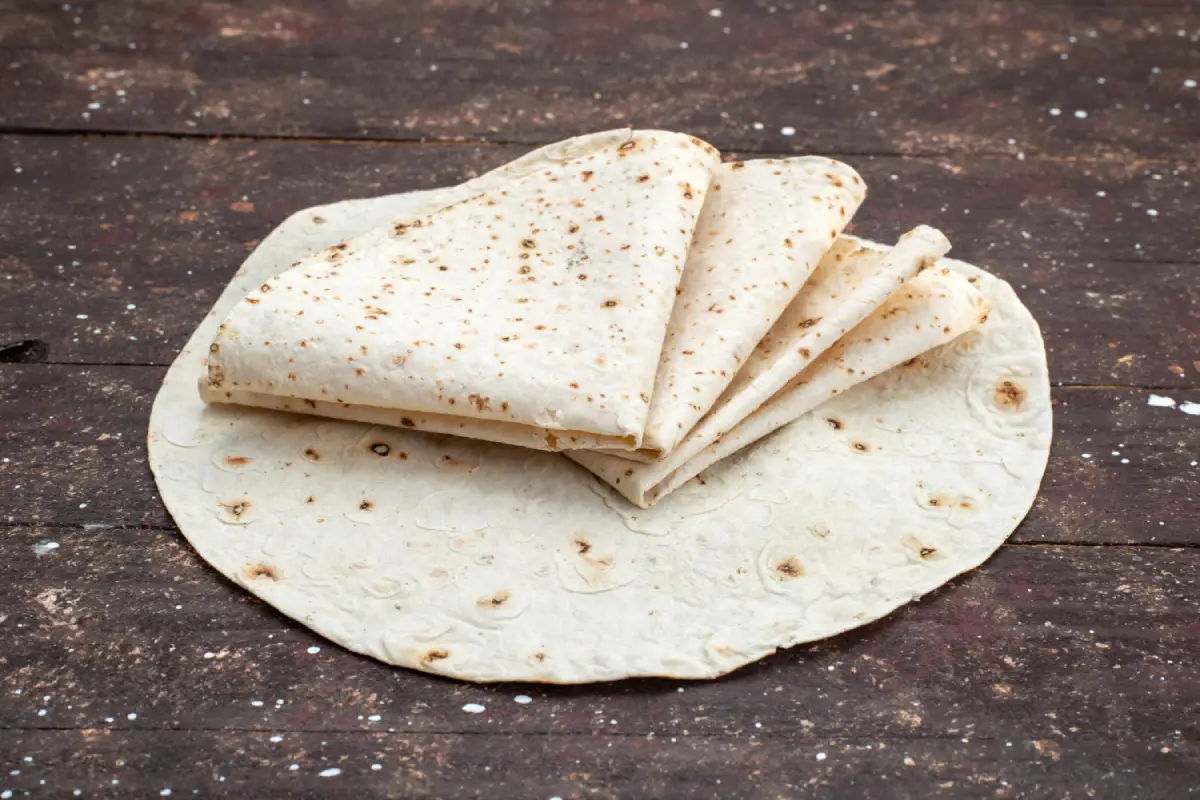
Ingredients:
- 1 packet (2 1/4 teaspoons) active dry yeast
- 1 cup warm water (not hot)
- 2 1/2 to 3 cups all-purpose flour
- 2 tablespoons olive oil
- 1 teaspoon salt
- 1 teaspoon sugar
Instructions:
- Dissolve yeast in warm water with sugar. Let it sit until frothy, about 5 minutes.
- In a large bowl, combine 2 1/2 cups flour, olive oil, and salt. Add the yeast mixture and stir to combine. Knead the dough on a floured surface until smooth, about 7-8 minutes.
- Place the dough in an oiled bowl, cover with a cloth, and let it rise in a warm place until doubled in size, about 1 hour.
- Punch down the dough and divide it into 8 pieces. Roll each piece into a ball, then flatten into a disk. Cover the disks with a damp cloth and let them rest for 30 minutes.
- Heat a cast-iron skillet or griddle over medium-high heat. Roll out each disk into a thin circle, about 1/4 inch thick. Cook one at a time until the pita puffs up, then flip and cook for another minute. Keep pitas wrapped in a clean towel to stay warm.
With these recipes, you’ll master the art of making falafel, hummus, and pita, inviting the authentic flavors and textures of Middle Eastern cuisine into your home. Enjoy the process and the delicious results!
Ingredient Spotlight
Delving into the core ingredients of falafel, hummus, and pita provides insight into the flavors and traditions of Middle Eastern cuisine. Understanding these ingredients is key to mastering the recipes and adding your personal touch.
Chickpeas: The backbone of both falafel and hummus, chickpeas are rich in protein, fiber, and nutrients. They provide a smooth, creamy base for hummus and a tender, yet firm texture to falafel.
Tahini: Made from ground sesame seeds, tahini adds a rich, nutty flavor to hummus. Its creamy texture and versatility also make it a popular dressing or sauce for many Middle Eastern dishes.
Fresh Herbs: Parsley, cilantro, and mint are essential for adding freshness and depth of flavor to falafel. Each herb brings its unique profile, enhancing the overall taste of the dish.
Spices: Ground cumin, coriander, and chili powder are traditional spices used in falafel. They introduce warmth, earthiness, and a slight kick, pivotal to achieving the authentic taste.
Olive Oil: A staple in Middle Eastern cooking, extra virgin olive oil is used for its health benefits and flavor. It’s essential in hummus and as a finishing touch in many dishes.
Garlic and Lemon: These add zest and tang to hummus, brightening the dish and giving it its characteristic zing.
Flour and Baking Powder (for Falafel): While not traditional in all recipes, some variations use a bit of flour and baking powder to help bind the falafel mixture and ensure a light texture when fried.
By sourcing quality ingredients and understanding their roles within each dish, you can elevate your falafel, hummus, and pita from simple homemade recipes to a culinary experience that transports you to the heart of the Middle East.
Nutritional Benefits
Exploring the nutritional profile of falafel, hummus, and pita shines a light on the health aspects of these Middle Eastern staples. Each component offers unique health benefits, making them a wholesome addition to any diet.
Falafel is a good source of protein and fiber, thanks to its main ingredient, chickpeas. This makes it an excellent option for vegetarians and vegans looking for plant-based protein. The herbs and spices used in falafel are also rich in vitamins and antioxidants, offering anti-inflammatory benefits. However, since falafel is traditionally fried, opting for baking or air-frying methods can reduce calorie intake while retaining its nutritional value.
Hummus combines the nutritional power of chickpeas, tahini, olive oil, and lemon, delivering a blend of healthy fats, protein, and fiber. This creamy dip can help control blood sugar levels, reduce risk factors for heart disease, and contribute to a healthy gut. The olive oil in hummus is high in monounsaturated fats, known for their heart-healthy properties.
Pita Bread, while being a simple carbohydrate, can be chosen in whole grain form to increase its fiber content, promoting digestive health and providing a sustained energy source. Whole grain pita is also a good source of essential minerals and B vitamins.
Incorporating falafel, hummus, and pita into your diet offers a balanced combination of macronutrients, essential for energy, alongside a host of micronutrients beneficial for long-term health. By making mindful choices in preparation methods and portion sizes, you can enjoy these delicious dishes as part of a healthy, balanced diet.
Cooking Techniques and Tips
Mastering falafel, hummus, and pita requires understanding some key techniques and tips. These insights will help ensure authentic flavors and textures, turning your kitchen into a Middle Eastern culinary haven.
Falafel
- Texture is Key: The texture of your falafel mix is crucial. It should be coarse, not smooth, to ensure the falafel holds together when fried and retains a satisfying crunch. Avoid using canned chickpeas for falafel; dried chickpeas soaked overnight give the best texture.
- Hot Oil for Frying: Ensure your oil is hot enough (around 350°F or 175°C) before frying. Falafel cooked in oil that’s not hot enough will absorb too much oil and become greasy.
- Shaping: Use a falafel scoop or two spoons to shape your falafel. This not only helps achieve the traditional shape but also ensures they cook evenly.
Hummus
- Creaminess Comes First: For ultra-creamy hummus, some chefs recommend peeling the chickpeas. While this is time-consuming, it can result in a smoother finish. Alternatively, blending your hummus well and adding ice-cold water can achieve a similar creaminess.
- Balance Your Flavors: Start with less garlic, tahini, and lemon juice than you think you need. It’s easier to add more to taste than to correct an overly strong flavor.
Pita
- The Perfect Puff: The key to getting pita to puff up in the oven is a hot baking surface and a high temperature. Preheat your baking tray or stone in an oven set to 475°F (245°C) for the best puff.
- Roll Evenly: Ensure your pita dough is rolled out evenly to prevent it from being too thick in the middle. This helps it cook uniformly and puff up nicely.
General Tips
- Freshness Matters: Fresh ingredients play a significant role in the vibrancy of these dishes. Use fresh herbs, quality olive oil, and freshly squeezed lemon juice for the best flavor.
- Experiment with Spices: Middle Eastern cuisine is known for its use of spices. Don’t be afraid to adjust the amounts to suit your taste preferences.
- Let Flavors Marry: Many Middle Eastern dishes, including hummus, develop more flavor as they sit. Preparing them a few hours before serving can enhance their taste.
By keeping these techniques and tips in mind, you’ll be well on your way to creating authentic and delicious falafel, hummus, and pita that are sure to impress.
Serving and Pairing Ideas
Falafel, hummus, and pita offer versatile flavors that pair well with a variety of dishes. Whether you’re planning a lavish Middle Eastern feast or looking for simple serving suggestions, these ideas will enhance your culinary creations.
Falafel
- Falafel Bowls: Serve falafel in a bowl with a base of mixed greens, topped with hummus, tabbouleh, pickled vegetables, and a drizzle of tahini sauce.
- Falafel Sandwiches: Stuff pita pockets with falafel, fresh vegetables like tomatoes and cucumbers, a smear of hummus, and a generous spoonful of tahini or yogurt sauce.
Hummus
- Mezze Platter: Hummus is a staple in mezze platters. Surround it with olives, sliced cucumbers, cherry tomatoes, and warm pita bread for dipping.
- Grilled Vegetables: A smear of hummus on a plate topped with grilled vegetables and a sprinkle of dukkah spices makes for a delightful side or appetizer.
Pita
- Pita Chips: Slice pita bread into triangles, brush with olive oil, sprinkle with za’atar or another favorite seasoning, and bake until crispy for a quick snack or appetizer.
- Wrap It Up: Use pita to wrap grilled meats or vegetables, adding hummus and fresh herbs for flavor and moisture.
Pairings
- Beverages: Complement the flavors of your dishes with mint tea or a chilled glass of white wine, such as a Sauvignon Blanc, which pairs nicely with the fresh, herbal flavors of Middle Eastern cuisine.
- Sides: A simple cucumber and yogurt salad or a fresh tabbouleh can provide a refreshing contrast to the rich flavors of falafel and hummus.
These serving and pairing ideas not only showcase the versatility of falafel, hummus, and pita but also invite creativity in the kitchen. By mixing and matching these suggestions, you can cater to any occasion, from a casual lunch to a festive gathering, celebrating the rich culinary heritage of the Middle East.
Exploring Regional Variations
Falafel, hummus, and pita, while rooted in Middle Eastern cuisine, have found their way into the hearts and kitchens of people around the globe, each region adding its own twist to these traditional recipes.
Falafel Variations
- Egyptian Falafel: Known as Ta’ameya in Egypt, this version is made from fava beans instead of chickpeas, giving it a distinct flavor and lighter color.
- Israeli Falafel: Often served with a variety of salads, pickled vegetables, and sauces like tahini inside a pita pocket, making for a hearty meal.
Hummus Variations
- Levantine Hummus: Traditional hummus bi tahini is a simple, creamy blend often topped with olive oil, a sprinkle of paprika, and sometimes whole chickpeas.
- Greek Hummus: While not traditionally Greek, variations in Greece might include more garlic and the addition of Greek yogurt for extra creaminess.
Pita Variations
- Middle Eastern Pita: Typically soft, thin, and pocketed, ideal for stuffing with ingredients.
- Greek Pita: Thicker and often grilled, Greek pita is used more as a wrap for gyro and souvlaki rather than being stuffed.
Global Influences
- Falafel Burgers: A modern, Western take on falafel, serving it as a patty in a burger bun with traditional and creative toppings.
- Dessert Hummus: Sweet versions of hummus, such as chocolate or cookie dough hummus, have become popular as a dip for fruits and sweets.
- Artisanal Pita: In many artisan bakeries outside the Middle East, pita is infused with herbs, whole grains, and seeds to add nutritional value and flavor.
These regional and global twists on falafel, hummus, and pita not only demonstrate the adaptability and universal appeal of these dishes but also encourage culinary experimentation. By exploring these variations, you can enjoy a world of flavors and find new ways to appreciate these Middle Eastern classics.
Modern Twists and Fusion Recipes
The timeless appeal of falafel, hummus, and pita has inspired chefs and home cooks alike to experiment with modern twists and fusion recipes, blending traditional elements with global flavors to create exciting new dishes.
Falafel Innovations
- Colorful Falafel: Incorporate beetroot or spinach into your falafel mixture for a vibrant twist that adds a pop of color and an extra nutritional boost.
- Falafel Waffles: Use your falafel mix in a waffle iron for a crispy, fun take on the traditional recipe. Serve with a side of hummus for dipping.
Hummus Creativity
- Avocado Hummus: Blend ripe avocados into your hummus for a creamy, rich texture and a fusion of Middle Eastern and Mexican flavors.
- Sweet Potato Hummus: Roasted sweet potatoes can add a sweet depth of flavor to traditional hummus, perfect for fall and winter menus.
Pita Possibilities
- Herbed Pita Bread: Add chopped fresh herbs like rosemary or thyme to your pita dough before baking for an aromatic twist.
- Pita Panzanella: Cube and toast pita bread to create a Middle Eastern twist on the classic Italian bread salad, panzanella, using fresh tomatoes, cucumbers, and a zesty dressing.
Fusion Dishes
- Falafel Tacos: Serve falafel in soft tortillas with a tahini-lime sauce, shredded cabbage, and quick-pickled onions for a Middle Eastern take on tacos.
- Hummus Pasta: Use hummus as a sauce base for pasta, thinning it with pasta water and mixing with roasted vegetables and herbs for a creamy, vegan sauce option.
These modern interpretations and fusion recipes offer a fresh perspective on falafel, hummus, and pita, proving that traditional foods can be endlessly reinvented to suit contemporary tastes and dietary trends. By experimenting with these ideas, you can bring an innovative twist to your cooking, delighting guests and adding a dash of creativity to your meals.
The Global Impact of Falafel, Hummus, and Pita
Falafel, hummus, and pita have transcended their Middle Eastern origins to become global culinary phenomena. This trio has made an indelible mark on the world’s food scene, showcasing the universal appeal of simple, flavorful ingredients prepared with care and tradition.
From Street Food to Gourmet Fare
Originally humble staples, falafel and hummus have risen to gourmet status in many parts of the world. Falafel has become a beloved vegetarian option across the globe, found in food trucks, fast-casual restaurants, and fine dining establishments alike. Similarly, hummus has evolved from a simple dip to a versatile ingredient featured in a variety of dishes, celebrated for both its flavor and health benefits.
Cultural Exchange and Adaptation
The journey of these dishes from local delicacies to international favorites is a testament to the power of cultural exchange. They have adapted to local tastes and ingredients, leading to an incredible variety of interpretations and serving methods. This adaptability has also led to a deeper appreciation of Middle Eastern culture and cuisine, fostering a global dialogue around food and culinary heritage.
Influence on Global Food Trends
The popularity of falafel, hummus, and pita reflects a broader trend towards plant-based eating, sustainability, and the search for authentic, artisanal food experiences. These dishes embody the principles of health-conscious eating without sacrificing flavor, offering a model for how traditional cuisines can contribute to contemporary dietary trends.
As we celebrate the global journey of falafel, hummus, and pita, we’re reminded of the universal language of food. These dishes have not only brought the flavors of the Middle East to new audiences but have also inspired innovation, creativity, and a shared culinary experience that transcends borders. Their enduring popularity underscores the idea that food can bring people together, fostering understanding and appreciation across cultures.
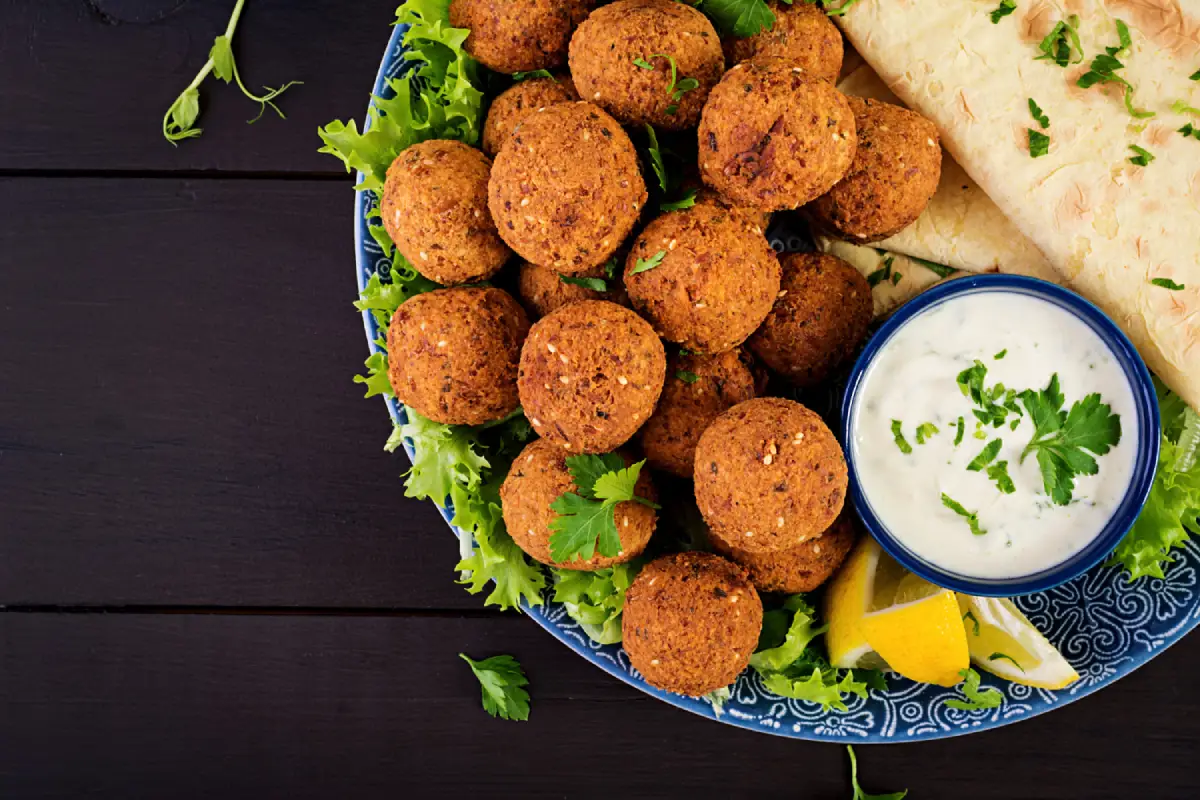
As we wrap up our journey through the flavors of the Middle East with our exploration of Falafel, Hummus, and Pita Recipes, we invite you to continue your culinary adventures with these carefully curated dishes from around the world. Each link below will guide you to another delicious recipe, offering diverse tastes and inspiration for your next meal.
- For a delightful twist on poultry, explore the vibrant flavors of Southeast Asia with this Thai Peanut Chicken Recipe. It’s a perfect blend of savory and sweet with a hint of spice.
- Embrace the comfort of seasonal vegetables in this heartwarming Rustic Autumn Vegetable Soup. It’s a nourishing and easy-to-make dish that showcases the bounty of fall.
- Dive into the world of homemade sweets with Making Blueberry Nougat at Home. This guide will walk you through creating a deliciously unique treat that’s sure to impress.
- Revisit a classic with our Ultimate Guide to Greek Salad. This authentic recipe brings the fresh, vibrant flavors of Greece right to your kitchen.
Each of these recipes not only brings its own unique set of flavors and experiences but also connects us to the wide and wonderful world of international cuisine. Happy cooking!

